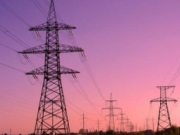Now, it’s not only your smartphone, laptop, tablet, games controller and kindle that needs electricity to work, it’s also your watch (with an 18 hour battery life).
According to the most recent data from The World Factbook, the average person in the European Union uses approximately 688 watts of electricity per capita.
In terms of your electricity bill, this is nothing. If you do the maths, your laptop, phone and iPad costs a mere €12 a year to run.
However, experts warn these prices are set to increase per kilowatt dramatically between now and 2020.
Mainly, it’s due to the way energy companies disperse energy. Many electricity grids are constantly running at a peak load and this huge surplus of electricity simply cannot be stored.
As technology advances further and demand increases, future generations are likely to see irregular supply, and fluctuating prices.
Today, mainland European countries draw electricity across local borders to meet local shortages, but governments are now placing a bigger emphasis on ensuring energy independency through renewables. Wind and solar, however, by their very nature, are unpredictable.
For renewables to ensure the world’s energy supply is not at risk, there needs to be other catalysts at play, and there is some ground-breaking technology being developed by GE to make it happen.
Pumped storage hydro plants, wind storage and big battery technology are seen as the future for grid energy storage, and GE has already established three key teams across Europe.
Storing energy at grid level means energy will be better more readily available, and renewables can be utilized during peak parts of the day in different areas, causing prices to remain stable.
Matt Cunningham, sales director at GE grid solutions says the potential in adapting to renewable can generate a number of benefits for the economy, and GE is looking to address the social implications which has had a lasting effect on the growth of renewables so far.
Storing renewable energy is not only good for the environment, but it is seen as a better way of recycling energy, instead of consuming all of the power as it becomes available.
This scale of energy storage will be key in dealing with the problem that is set to emerge in the next couple of decades. It is a known fact that fossil fuels are beginning to run out, and experts predict that half the energy will be renewable in the next 20 to 30 years.
“Worldwide population continues to grow - meaning there is less coal and oil available to the masses,” says Jean Michel Claude, senior application engineer in GE PowerGen team. “Renewable energy provides people with electricity in an unpredictable manner. Offer does not often meet the demand. We have to make a better association with pumped storage and renewable energy for the future.”
At the moment, grid scale storage is dominated by pumped hydro. Pumped storage plants requires two water reservoirs and a large operating geography. The method involves storing energy in the form of water, which is pumped from a lower elevation reservoir to a higher elevation, consuming the excess of energy available in grid. During periods of high electrical demand, water is flowing down to the turbine and generate electricity back into the grid.
Jean-Michel Claude says countries across Europe, including Switzerland, Austria and France are already beginning to see the benefits of pumped hydro plants, with many expected to follow. “Europeans are beginning to agree that renewable energy is a key economic concern, and becoming well prepared will have a big impact on the independency of a country. At this stage, no-one is paying for wind, solar or sun.”
Pumped storage, given its complexity, takes a long time to develop and a big space to build. In the short term, Cunningham argues that big batteries could hold the most immediate future for grid scale storage.
The UK launched a new research project late last year, to connect the UK’s first two-megawatt lithium titanate battery with an energy grid. The project is aimed to test the technological and economic challenges of using big batteries in such a way.
It is the largest battery of its type installed in the UK, and is seen as a safer longer lasting option in comparison to lithium ion.
The project is particularly important because many companies have long considered installing big batteries to store excess electricity from renewable sources, but uptake of the technology has so far been slow considering costs and uncertainty over how they may work commercially.
Cunningham says GE Power Conversion has a very agnostic approach to the number of different batteries that are available, as different technologies suit different customer and application requirements. Whilst the technology as a whole is still being demonstrated, he understands the reluctance that many companies may have in adopting big batteries at this stage.
“Developers must also look at the lifespan of the technology in operation,” he says. “There’s no point building the most efficient system if you have to replace the energy source every three to five years. Batteries must also be recycled in the right way, and the cost of that can make a huge difference in project lifetime costs. There’s still a long way to go for batteries, but it’s refreshing to see the technology being developed to help grids understand how to use them. We are definitely heading in the right direction.”
27 Декабря 2025 | суббота | 14:45


